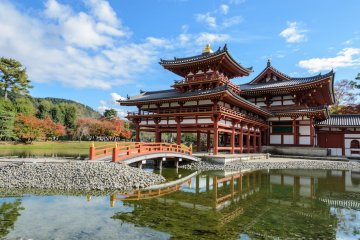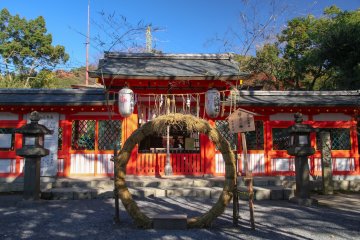Housed in the former Nintendo Uji Ogura Plant, the museum has been thoughtfully renovated into a modern, visitor-friendly space. The interior has been redesigned for access and accessibility while much of the entire building's original character has been preserved.
Inside, you’ll find a wide-ranging showcase of the entertainment Nintendo has created since its founding in September 1889—from traditional Hanafuda playing cards to the latest Nintendo Switch. Exhibits are arranged by era on the second floor of Exhibition Building 1, allowing visitors to follow Nintendo’s story from past to present. Across several themed zones, you can view side-by-side displays of early toys, classic handhelds, and home consoles that helped shape the gaming world. Iconic systems like the Famicom (NES), Game Boy, and Nintendo 64 are on display in excellent condition. Each exhibit is accompanied by easy-to-follow visuals in both English and Japanese, along with interactive features that let you explore Nintendo’s legacy at your own pace.
Another highlight of the museum is the Unique Play Experiences area on the first floor of Exhibition Building 1. This zone features interactive exhibits that capture Nintendo’s signature blend of creativity and innovation—including games that use oversized controllers and play out on giant screens. Each visitor receives 10 digital coins upon entry, which can be used to access selected exhibits. Since each activity requires a different number of coins, you’ll need to choose carefully—adding a light strategic element to your visit, much like playing a Nintendo game itself.
After exploring the interactive exhibits, visitors looking for a more hands-on, creative experience can join the craft workshop. Here, you’ll create your own Hanafuda playing cards. Once your set is complete, you’ll also learn the rules and have a chance to play the game. This experience requires a same-day reservation and an additional fee, so be sure to plan ahead if you’d like to take part.
Ticket information
A visit to the Nintendo Museum takes about 1.5 to 2 hours, and you’ll need to plan ahead as same-day admission isn’t available at the moment. Tickets are offered through a lottery system, and you can apply up to three months before your visit using a free Nintendo Account. If your entry gets selected, make sure to pay by the 7th of the following month using a credit card. You’ll get an email with the results, but you can also check the ticketing site. Further, your QR code ticket will be ready to download from 2pm the day before your visit.
On the day itself, don’t forget to bring your QR code and a valid ID. If you’re not a Japanese national, your passport is required. Once your code is scanned and you pass through security, you’ll get your official play ticket. If you bought tickets for friends or family, you can assign them their own QR codes too, as long as they have Nintendo Accounts.
The ticketing system is a bit of a process, but the visit offers a fun and nostalgic dive into Nintendo’s world—something many fans find well worth the effort.









/135.7823155,34.8925052,9/397x132?access_token=pk.eyJ1IjoiamFwYW50cmF2ZWxtYXBzIiwiYSI6ImNqbXBtOXYxbDB5Z3ozbHFrazJuYWMwOGYifQ.v15fy_mcFWtgopmz8PhwqA)

